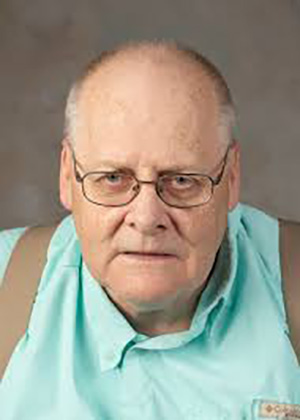By Greg Markley
For the Opelika Observer
In 2003, Arnold Schwarzenegger announced on late-night TV that he was a candidate in a special recall election for California governor. He had no trouble winning as his supporters would chant “I’ll be back,” from his Terminator movies. When he ran for a second term in 2006, people again shouted that phrase as he beat his closest opponent by 16 points.
“I’ll be back” was his signature phrase as an actor. But it became sort of a political slogan. Message: Arnold would “be back” after tussling with the problems in the Golden State. His popularity as a Republican was due to his social liberalism and his star power. On July 1, 2020, I wrote about slogans from Alabama’s elections of 2018 and 2020. Today we look at presidential candidates’ slogans from 2008-2020.
Barack Obama was able to move from his short time in the U.S. Senate to the White House in the 2008 election cycle. His small resume, compared to previous presidential contenders, required that he emphasize the uniqueness of his campaign, personality and opportunity to transform the government. So, his two main slogans were dynamic and appropriate for his campaign.
The best-known slogan was “Yes, We Can.” Frequently shown on posters, “Yes, We Can” was presented with the Obama “Hope” poster. This is an image of Obama two years before the election, designed by street artist Shepard Fairey. It became an iconic portrait in pencil depicting the candidate in solid red, beige, light and dark blue.
Another slogan was “Change We Can Believe In.” I consider this weak because it wants it both ways—it doesn’t support change completely, so is not as hopeful as it might otherwise be. It just seems qualified, where “Yes, We Can” is like a high school sports cheer when your team is a bit behind yet victory is well within reach.
John McCain, with a large military and political resume, took the slogan “Country First” to remind people of his accomplishments and what motivated him. The second slogan was “Reform, Prosperity and Peace.” What a mouthful! All three topics are great goals, but slogans that really move people are best with simpler words.
In 2012, President Obama used the slogan “Forward.” It’s good on a poster, very progressive. But a crowd yelling just “Forward” is unappealing. Meanwhile, Mitt Romney used a harsh “Obama Isn’t Working” slogan. The danger is racial implications: i.e. “Obama isn’t working for whites” or “He is not working because he’s inept.” I doubt Mitt thought about how “…Isn’t Working” could be interpreted.
Four years later, Donald Trump emerged on the political scene. His slogan was “Make America Great Again” and as a skilled showman Trump developed red and white MAGA baseball caps. Hillary Clinton had four slogans: the workable “Hillary for America,” the acceptable but not stirring “Forward Together,” the better “Stronger Together,” and the popular but gender-focused “I’m with Her.”
Now, to this year, with the presidential and congressional election set for November 3. President Trump ‘s slogan has morphed to “Keep America Great” or the alternative “Transition to Greatness.” On that, “Transition” seems to be about gradualism and is uninspiring. One thing you do not see as much is the aging “Build the Wall and Crime Will Fall.”
Former Vice President Joe Biden’s slogan is: “Our Best Days Still Lie Ahead.” That is optimistic and departs from the gloominess of usual political talk. Bernie Sanders’ famous slogan from 2016 was “Feel the Bern.” That one is great—clever and references the “heat” spread by Sanders’ enthusiastic progressives.
In 2020, he sometimes used “Not Me. Us.” It is an oblique reference to politicians who put their personal interests before the common good. It’s a short, sweet line that I believe is derived from a television commercial, perhaps a public service announcement. Andrew Yang had the effective “Not Left. Not Right. Forward.” But most Democrats wanted the Left to be emphasized, not anything else.
Incidentally, it’s worth noting how Donald Trump got the idea for his catchy slogan. He first thought of “Make America Great Again” after the Republican loss in 2012. Republicans figured that Mitt Romney was a shoo-in, giving the poor economy, so Trump was thinking what his own route might be to win in 2016.
On January 17, 2017, three days before assuming the presidency, he remarked: “I said, ‘We’ll make America great.’ I started off ‘We Will Make America Great.’ That was my first idea, but I didn’t like it. And all of a sudden it was going to be ‘Make America Great.’ But that didn’t work because it slighted America because that means it was never great before. And America has been great before.”
He settled on ‘Make America Great Again’ and never looked back. Trump was so pleased that he approached his lawyers saying, “See if you can have this registered and trademarked.” Just days after Romney’s loss, Trump signed an application to trademark the phrase. Then he may have said, like Arnold Schwarzenegger: “Hasta la vista baby” to people who doubted he would actually seek the presidency.
Greg Markley has lived in Lee County for 20 of the past 24 years. An award-winning journalist, he has master’s degrees in education and history. He taught political science as an adjunct in Georgia and Alabama.

